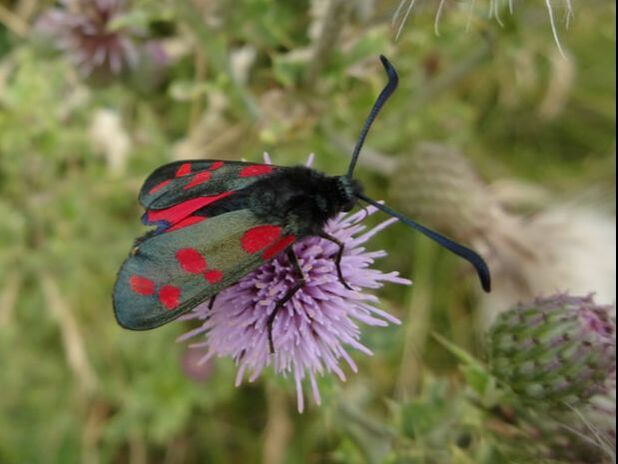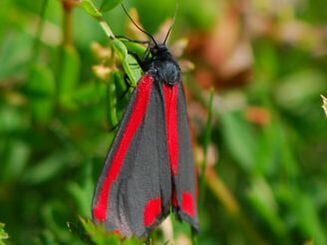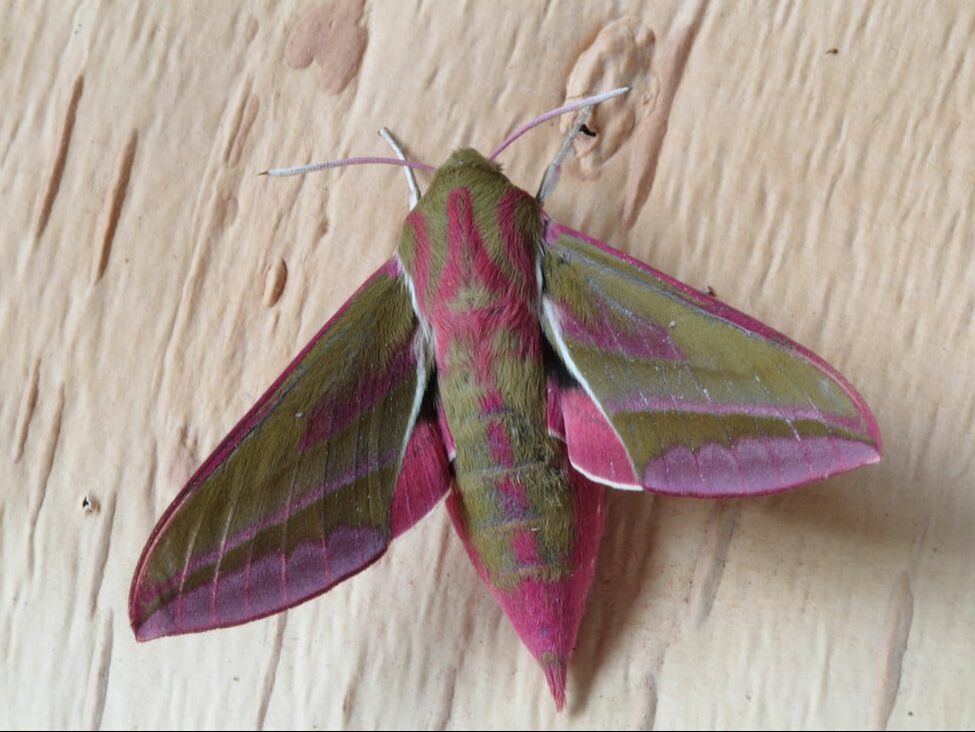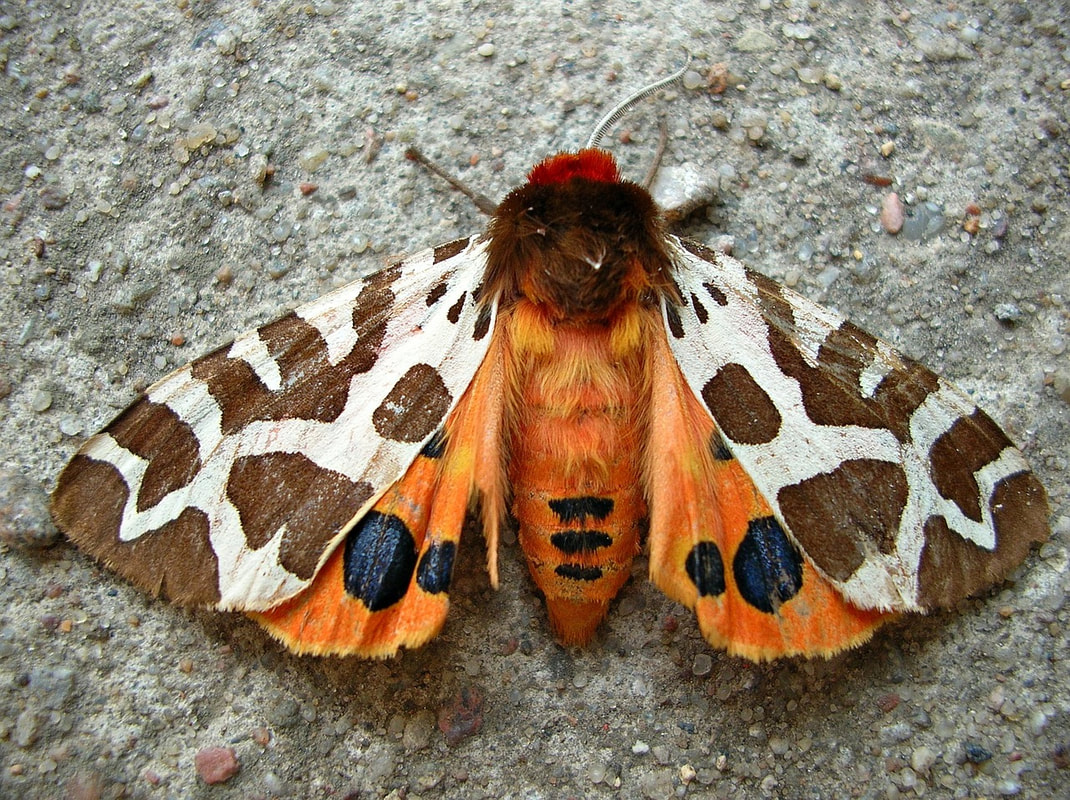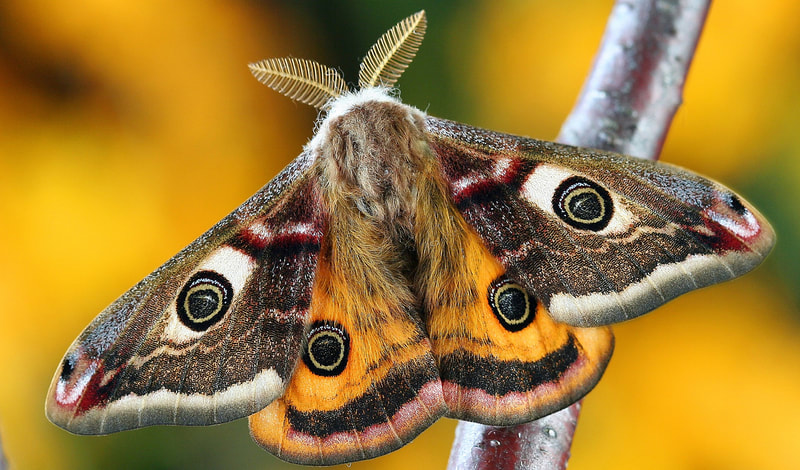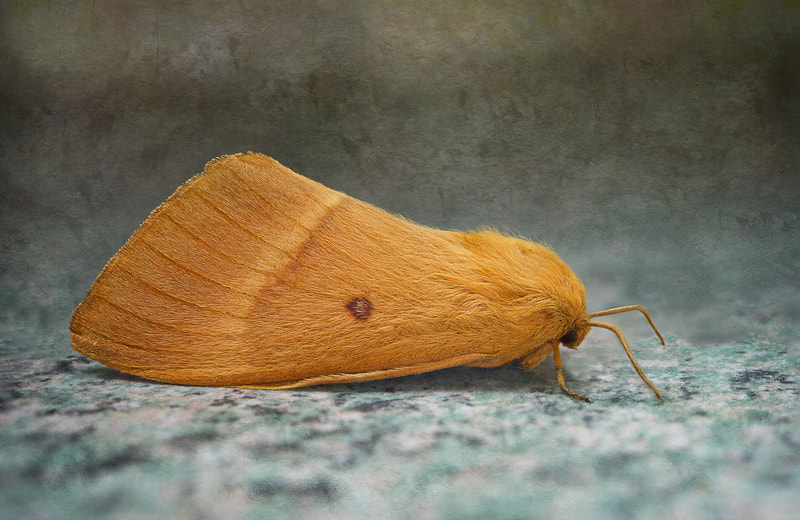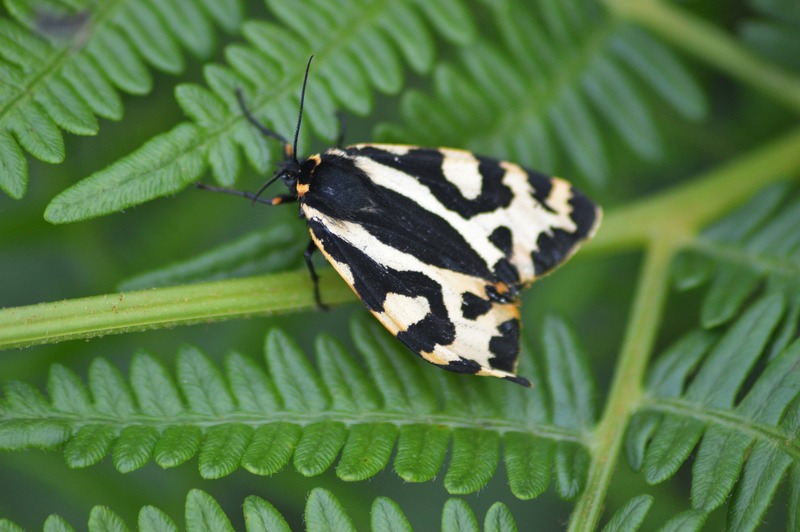Day-flying Moths
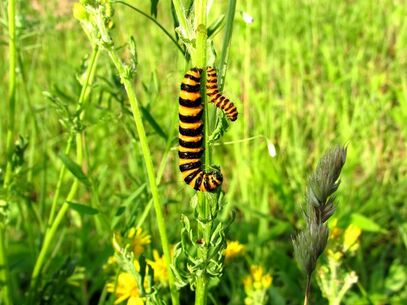 Cinnabar Moth Caterpillar
Cinnabar Moth Caterpillar
Now for some colourful day-flying moths which are well worth welcoming to our greenspace. Among them are the striking red and black Six-spot Burnet and Cinnabar moths, the caterpillars of which feed on BIRDS'S-FOOT TREFOIL, and RAGWORT respectively. Their bright colours both as caterpillars and adults offer protection from birds by indicating that they are distasteful, although presumably one or two have to be eaten first for the birds to learn the lesson.
This type of vivid protective coloration will be seen on any visit to a tropical butterfly house, but native British butterflies tend to rely more on camouflage than toxicity to evade predators. The day-flying Burnet and Cinnabar moths, however, provide us with striking native examples of warning colouration.
Moths of the Night, but often Spotted During the Day
Another moth well worth catering for is the extremely attractive pink and olive-green Elephant Hawk Moth. It's caterpillars' demands are easily met - ROSEBAY WILLOW HERB. The adults are nocturnal, flying from dusk and resting by day among their nectar plants. They seek out flowers that open or produce their nectar at night, including honeysuckle (Lonicera) and other tubular flowers from which they extracts nectar on the wing, hovering above without having to settle on them. Butterflies can’t do that; they need some sort of foothold.
This type of vivid protective coloration will be seen on any visit to a tropical butterfly house, but native British butterflies tend to rely more on camouflage than toxicity to evade predators. The day-flying Burnet and Cinnabar moths, however, provide us with striking native examples of warning colouration.
Moths of the Night, but often Spotted During the Day
Another moth well worth catering for is the extremely attractive pink and olive-green Elephant Hawk Moth. It's caterpillars' demands are easily met - ROSEBAY WILLOW HERB. The adults are nocturnal, flying from dusk and resting by day among their nectar plants. They seek out flowers that open or produce their nectar at night, including honeysuckle (Lonicera) and other tubular flowers from which they extracts nectar on the wing, hovering above without having to settle on them. Butterflies can’t do that; they need some sort of foothold.
SIX SPOT BURNET MOTH
|
CINNABAR MOTH
|
ELEPHANT HAWK MOTH
|
GARDEN TIGER MOTH
|
Every one of the 2,500 or more species of moth so far identified in Britain, is in its own way as fascinating as butterflies.
The male Emperor Moth below is certainly as attractive as any butterfly. Note the feathery antennae used to detect the scent of a female as he flies around during the day. The Emperor is one of those moths, the Oak Eggar another, where the males tend to fly by day and the females by night. Once mated, the females fly off under cover of darkness to find suitable plants on which to lay their eggs. Both of these extremely large attractive moths are common throughout Britain and Ireland.
None of the three moths pictured below - Emperor, Oak Eggar and Wood Tiger moths - feed as adults, but depend on the food reserves laid down as a caterpillar to produce eggs and power their flight. They are not interested in pretty flowers, just a highly nutritious diet for their caterpillars, as this needs to see them through their life cycle.
The male Emperor Moth below is certainly as attractive as any butterfly. Note the feathery antennae used to detect the scent of a female as he flies around during the day. The Emperor is one of those moths, the Oak Eggar another, where the males tend to fly by day and the females by night. Once mated, the females fly off under cover of darkness to find suitable plants on which to lay their eggs. Both of these extremely large attractive moths are common throughout Britain and Ireland.
None of the three moths pictured below - Emperor, Oak Eggar and Wood Tiger moths - feed as adults, but depend on the food reserves laid down as a caterpillar to produce eggs and power their flight. They are not interested in pretty flowers, just a highly nutritious diet for their caterpillars, as this needs to see them through their life cycle.
